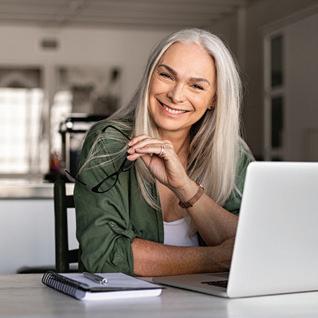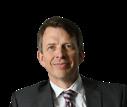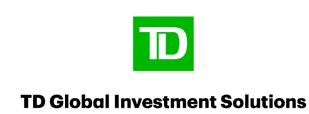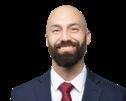EAFE & EMERGING MARKETS

WORK THAT MATTERS
Passion for well-being drives benefits head
DECUMULATION
Expertise needed on post-retirement strategy
PENSION PARITY
Is it finally in sight for physicians?


WORK THAT MATTERS
Passion for well-being drives benefits head
DECUMULATION
Expertise needed on post-retirement strategy
PENSION PARITY
Is it finally in sight for physicians?
The thought leadership content of Benefits and Pensions Monitor goes beyond the pages of its eight issues. Between publications, www.benefitsandpensionsmonitor.com showcases more great reads. Visit the website today to see articles on:



With the heightened market volatility and complexity, institutional investment portfolios need the right investment partner.
2023
If there’s any silver lining to the pandemic, it has to be the modernization of benefit plans that occurred over the past three years.
The Parlous State of ESG

Companies who market their products with ESG/ sustainable labels, without adequate justification, also need to be held to account and, if necessary, fined.

A more manageable, long-term approach could help foster healthy habits that can last a lifetime. And it’s these habits that can help prevent illness.
Our website is also the home for research from some of Canada’s leading experts.
at





Awarm welcome to you all as we usher in a new, exciting era at Benefits and Pensions Monitor (BPM).
Usually, these would be the column inches to wax lyrical on a specific issue or beat the drum for a point of view. That will come in future editions, but first, I’d like to bring you up to date on developments at BPM HQ.
After many years gallantly serving readers and clients in this space, BPM’s publisher Powershift Communications was acquired by KM Business Information Group on April 11, 2023. I would like to doff my cap to the previous regime and all their hard work, while simultaneously looking to the future.
KM (Key Media), I am proud to say, has been a company on the rise for more than two decades. From a few people in an office in Sydney 21 years ago, the company has blossomed into an award-winning global B2B information provider with 340 staff working on around 25 websites, 14 magazine titles, and 60 annual events in Canada, Australia, USA, UK, New Zealand, and the Philippines.
BPM will now benefit from these global resources, as well as from our unwavering passion for delivering exceptional content and service to readers and clients.
In terms of the BPM magazine, that starts now. The following pages feature more people profiles and interviews, including the cover story – a special report on emerging markets, with an accompanying directory. Look out for more special reports in upcoming issues. In this issue we also highlight a select number of thought-provoking opinion pieces from industry professionals on the front line, as well as insightful exclusive features from our trusted clients.
I hope you enjoy what follows – but it would be remiss of me not to stress that print is only half the story. I am also proud to announce we have a new website – benefitsandpensionsmonitor.com – which aims to cover all the latest news and views in the industry on a daily basis. If you like what you see, sign up for our free newsletter, which lands in your inbox every morning.
Our aim is to keep building the BPM community by putting you, the professionals, front and centre in our coverage and by consistently offering content that informs your work. If you have a story, wish to be featured, or are interested in knowing more about partnership options at events and webinars or sponsored content possibilities in print or digital, get in touch.
BPM is as much yours as ours. Enjoy this issue, and I look forward to hearing from you.
James Burton, global managing editorEDITORIAL
Global Managing Editor
James Burton Editor
Nienke Hinton
Content Editor
Kel Pero
ART & PRODUCTION
Designers
Khaye Cortez
Marla Morelos
Production Coordinators
Kat Guzman
Loiza Razon
Client Success Coordinator
Michelle Tamayo
Vice President, Production
Monica Lalisan
SALES & MARKETING
Business Development Director
Abhiram Prabhu
Business Development Manager
Doris Holinaty
Account Manager
Michael Hughes
Webinar Producer
Kristyn Dougal
CORPORATE
President & CEO
Tim Duce
Director, People and Culture
Julia Bookallil
People and Culture Business Partner
Alisha Lomas-Oliver
Chief Revenue Officer
Dane Taylor
Chief Information Officer
Colin Chan
Global COO
George Walmsley
Global CEO
Mike Shipley
EDITORIAL ADVISORY BOARD
Randy Bauslaugh, Bauslaugh Pensions & Benefits Law
Celine Chiovitti, OMERS
Joe Connelly, Morneau Shepell
Doug Crowe, RBC
Tim Clarke, tc Health Consulting

John Dynes, Cascadia
Greg Hurst, Greg Hurst & Associates
Neeraj Jain, Mawer
Alain Malaket, InBenefits
Mark Newton, Newton HR Law
Robert Weston, Pharos Platform
EDITORIAL INQUIRIES james.burton@keymedia.com
SUBSCRIPTION INQUIRIES
tel: 416 644 8740 • fax: 416 203 8940 subscriptions@kmimedia.ca
ADVERTISING INQUIRIES
Michael Hughes michael.hughes@keymedia.com
Doris Holinaty doris.holinaty@keymedia.com
tel: 416 644 8740
KM Business Information Canada Ltd. 317 Adelaide Street West, Suite 910 Toronto, ON M5V 1P9 tel: +1 416 644 8740 www.keymedia.com
Benefits & Pensions Monitor is part of an international family of B2B publications, websites and events for the finance and insurance industries
WEALTH PROFESSIONAL james.burton@keymedia.com
T +1 416 644 8740
We aim to consistently offer content that


GONE ARE the days when organizations looked at their benefits as an annual fixed expense. They would renew, repeat, and that’s it. The pandemic is predominantly responsible for the change in approach. It shone a light on just how fragile our respective provincial healthcare systems are. The backlog for surgeries is disheartening. Scheduling a session to speak with a paramedical practitioner can take months.
The post-pandemic world poses a new reality for Canadian employers. They are quickly mobilizing to align interests among all stakeholders – finance, HR, and their employees. The question has therefore changed from “How can we save more?” to “How can we shore up our plan to attract, reward, and retain our employees for the next phase of growth?”
Just before the pandemic, in January 2020, Sanofi conducted a survey, asking Canadian
employers what was on their benefits wish list. Canadian employees have informed their organizations of the impact COVID has had on them. Eighty-four percent report a decline in their mental health;[i] 34 percent fear becoming ill; 16 percent experience loneliness;[ii] and there has been a 20 percent increase in claimants for medications relating to depression.[iii] As a result, 82 percent of firms agree COVID had a major impact on their employees.
A major pivot to virtual benefits would offer more access points for employees. It’s a modern solution for a post-pandemic world. There are numerous advantages to installing a proper wellness program, and, among employers who offer wellness, more than half saw a decrease in absenteeism, while 66 percent reported increased productivity.
Most employers have been conditioned to
believe that having all their benefits with the same provider is a good idea – and are tied to one insurer. Having a single-source provider means employers are ultimately left with two choices at renewal time: 1. accept incremental yearly increases; 2. conduct a marketing exercise that could either lower incumbent premiums to market levels or lead to a switch in providers.
But another best practice is leveraging the power of a third-party administration (TPA) platform to buy benefits. Instead of a single-source provider, a TPA procures benefits by line item, which could mean having numerous insurance carriers in the background, but receiving a consolidated bill, booklet, and one card.
Now employers can step away from the vicious cycle of marketing their plan every three years. All they need to do in future is plug and play. There is no disruption to HR, finance, or employees. There is no longer the headache of switching all benefits to a new provider. There is simply the TPA. And for you benefits geeks, here’s where it gets interesting: TPAs can house virtual benefits and wellness programs, which allows them to speak to each other.
Establishing a committee made up of plan members, the plan sponsor, and an advisor would better equip a company in finding alignment between stakeholders’ needs and the bottom line. Benchmarks and surveying the requirements of plan members help identify the unique desires of each organization. In this framework, it would be prudent for plan sponsors to work with their advisors to recognize and address the gaps. Capable advisors will help shed light on how to modernize benefits plans to attract, reward, and retain. The pandemic has forced companies to evolve, look forward, and think outside the box. Best practice would be to implement good governance and prepare for a world of service providers beyond the traditional offering.


ANDREJKA MASSICOTTE has always had a personal interest in health and has been committed to fitness and well-being all her adult life. This passion has motivated her to design plans and produce products that focus on overall wellness, which includes good mental health, so people can cope with the normal stresses of life, work productively, and realize their potential.
Massicotte’s career path both aligns with her passion for health and well-being and demonstrates how she is open to change and new, exciting opportunities.
Once she graduated from university, Massicotte joined a consulting firm that decided to bring one actuarial student into the group benefits consulting side of the business, something it had not done before, so she took the chance. “That’s how I ended up doing group benefits,” she says. “I spent the early part of my career in group benefits consulting and ended up moving to the employer side.”
Eventually, Massicotte joined RBC on the benefits plan sponsor side and managed employee plans and, before moving to her
current position, she led the benefits strategy for RBC employees within North America. “I also managed UK and Europe for a portion of my time in that role.”
She also managed RBC’s global wellness strategy during that time, which aligned with her personal passion for wellness. That synergy continues in her new role with RBC Insurance on the provider side as head of group benefits. She is responsible for product
Well-being a personal journey
Massicotte says well-being means something different to everybody. Everyone is on their own personal journey; one person may be concerned about financial well-being, just as another worries about mental health. The goal is thus to support and balance overall wellness.
She adds that mental health is a key element of overall wellness, because “there
strategy and development and for expanding the business. She works closely with operational partners and sales and business partners “to make sure that we’re bringing the right solutions to market and we’re developing the right client-centric processes and systems.”
is no health without mental health. Mental health is intertwined with everything we do, including physical health, nutrition, and finances.” She is committed to continuing to build awareness of mental health to help reduce the stigma around it.
Andrejka Massicotte, head of group benefits, RBC Insurance, wants plan members to achieve overall wellness and realize their full potential
“There is no health without mental health. Mental health is intertwined with everything we do, including physical health, nutrition, and finances”


One of the challenges as a benefits provider is creating awareness about the support that is available to plan members and clients and how they can best make use of their programs. “The goal is to get people to think of us in the moments they need us,” says Massicotte. “We want plan members to use our wellness support before they have health issues. We are here to support our clients.”

The well-being of her team is also very important to Massicotte. “I want them to understand the impact their work has, no matter where they are involved in the process,” she says. She likes to generate ownership of the work by keeping the team directly involved in the entire process. “Regardless of someone’s
level, they should have an understanding of the direct impact that we have on people.”
Supporting people in times of need Massicotte says the best part of her job is the people she works with. “They really care about what they do,” she says. “In these
types of roles, whether we are designing a plan or producing products to support employees, ultimately we are supporting people in times they really need it and in moments that matter.


“The people I work with have always been incredibly passionate about what they do.

“[My colleagues] really care about what they do. In these types of roles ... ultimately we are supporting people in times they really need it and in moments that matter”
University of Waterloo, post-degree diploma, Actuarial Science; McMaster University, bachelor of science (B.Sc.), Mathematics and Statistics, 1995–1999.
YEARS IN INDUSTRY 23
“Do not be afraid of change. I received this early on in my career, but it comes with experience and tenure as well. Jump into opportunities that might make you feel uncomfortable, because those are the areas where real growth happens”
“Doing work that will directly affect someone’s life positively and will support them at a time when perhaps they may be facing challenges”
They really care about the end user and what it means to produce the right product or deliver the right solution.”
She adds that she gets fulfillment from her career because “the work I do every day, I know it affects people. [Our products and services] support people and help them along their health and wellness journeys to lead healthier lives.”
When asked what she would want her legacy to be, she says, “I would want to be known as someone who deeply cared about the work I did and for clients to understand that every strategy I developed or product I rolled out came from a place of care and concern and a desire to support people to live healthier, better, and more well lives.”
Our good people make it easy to find the perfect group benefits for your clients. Like a true partner, we really get to know you and your clients’ needs to offer the best possible insurance solutions that aren’t just easy to implement, they’re easy to recommend, too.
Find the cookie to your milk at Beneva.ca/en/group-insurance


KHAN TRAN started his career as a chartered professional accountant (CPA) because he thought it would be a “safe profession” in which he could earn a good living.
He quickly realized, however, that he wanted to achieve more in life, and sought employment that offered greater challenges and the opportunity to make a difference. He wanted to build a career in alignment with his values. So, along with his CPA, Tran also became a Chartered Financial Analyst (CFA) with a BBA from Wilfred Laurier University.
After a few years at accounting firms and investment management companies, he found an opportunity as a portfolio manager at the CPP Investment Board (now CPP Investments). This role introduced him to real estate.
“CPP had just started actively investing in real estate, and its portfolio wasn’t very
big, with mostly Canadian investments,” says Tran. “The mandate was to go to the US and find opportunities, find real estate, and grow the portfolio. We had a lot of capital.
“It was a great time to grow up in the industry. We had a lot of autonomy. One day we’d be traveling to Los Angeles and touring malls to buy, then the next day we’d be in Allentown, PA, looking at industrial buildings and farmland. I worked with some of the smartest people in the industry and the experience was just invaluable.”
During his time at CPP, Tran learned a lot about the real estate industry. “We had a wide lens globally on both investment partners and developers, and we learned who was going to be a good investment and who
wasn’t. Some of the trends I saw in real estate helped inform the next stage of my career and my move to TAS.” He says he became aware of TAS, saw what the company was doing, and knew he could contribute.
He joined the company in 2018 as executive vice-president, investments, and
Tran wanted to achieve more in life, and sought employment that offered greater challenges and the opportunity to make a difference

was made chief investment officer in 2021. He says the role provides him with the challenges and variety he likes, and he gets to work with “an incredibly talented team.” It also offered the opportunity to have an impact on the community.
TAS is a real estate platform with a mandate to generate meaningful impact. The company focuses on impact-driven
different perspective. I also appreciate and understand how different things in our business and industry all interconnect,” says Tran.
He adds that there are a lot of challenges in real estate today, including fluctuating interest rates. “At the beginning of last year, a construction loan would have had an interest rate of three percent. Now
ground-up development and asset management, and manages a best-in-class equity platform focused on the belief that profit is foundational, but not the only goal.
The company pursues opportunities that create value for investors and generate measurable social and environmental impact. Its active development pipeline and portfolio under management totals over seven million square feet of residential and commercial space. It uses real estate as a tool to drive profit and purpose.
TAS has developed what it terms an impact framework to reframe capital as inclusive of social, environmental, and cultural capital alongside financial capital and show that it can actually drive impact alpha.
“I enjoy being able to sit down and problem-solve and look at things from a
it’s eight percent. It’s harder to make the economics work. There is a genuine need in the market for housing, so we need to create housing in a way that incentivizes developers to build and make a reasonable profit.
“We’re getting to a breaking point in the system where everyone sees the imbalance, but we have many creative and bright minds in the industry who are finding ways to make it work, whether it’s through developing public or private partnerships or through creative delivery of systems.
“I believe that’s where innovation usually breaks out. It’s during these really challenging periods when people are forced to think of creative ways to solve problems.”
Tran is proud of the work TAS does, and feels grateful and privileged to be a part of it.
Wilfrid Laurier University, BBA, Business
BEST ADVICE YOU’VE EVER RECEIVED?
“Know what you value. I find the people who are happiest are the ones who have built their lives in alignment with what they value”
The Canadian pension industry has world-class models for saving – but what if we created comparable vehicles for decumulation?
PLANNING AND SAVING for retirement are too hard for most Canadians.
Seventy percent of Canadians are worried they aren’t saving enough for retirement, and 62 percent are concerned they will outlive their retirement savings.
Part of the challenge is that many Canadians underestimate the true cost of retirement. Housing, healthcare, transportation, and food expenses add up quickly, and tend to rise over time with inflation, especially with increasing longevity.
Another challenge is the behavioural shift from building or “accumulating” savings during one’s working years to drawing down or “decumulating” savings without a steady income source in retirement.
The risk is real because many don’t have the skills or access to solutions that spread their savings efficiently in retirement, which need to account for:
1. Longevity risk – outliving one’s savings, which is a significant concern for most Canadians
2. Tax efficiency – decisions around deferring government benefits or starting early, or whether to draw down from the TFSA or RRSP first
3. Market volatility and inflation – the risk of cost-of-living expenses increasing over time and the ability of people’s savings to withstand downturns
4. Minimizing fees – assessing the marketplace of drawdown options to ensure the chosen vehicle fees do not
erode their savings and, ultimately, standard of living
Modern defined benefit (DB) pensions are simple, flexible, cost-effective, and last a lifetime. These cost-certain plans are now available to all Canadian workplaces. However, Canadians want additional options to tailor to their needs in retirement.
According to a report by the National Institute on Ageing, retiring Canadians are “trapped between two extreme and inadequate decumulation options: buy a life annuity from an insurance company or move their accumulated savings into a personal retirement income fund, where they must individually manage the fund’s investment and drawdown.” There is an enormous pool of savings here in need of better management. Pension innovators can step in to fill the market gap.
Large pension funds benefit from a kind of scale and risk pooling that are out of reach for individuals through access to unique asset categories and much lower fees, both of which financial experts know are key to compound value and growth over time. Then there is the expertise. Many of the large Canadian pension plans are some of the most admired and well-managed in the world – and trusted by members.
Canada has many accumulation options. It’s time to broaden retirement plan designs to capture the decumulation life stage and

provide cost-effective retirement income for life. These are basic needs that retirement industry leaders have the resources and responsibility to address.
Retirement literacy should cover the whole lifespan of senior living
Risk tolerance, expenses, and lifestyle standards fluctuate over time. Increased spending often occurs when workers “cross the finish line” and spend to celebrate being work-free, and again in the later years when expenses like health care can increase substantially. This drives dynamic changes in income needs.
Conventional financial literacy treats retirement as a finish line, yet the average Canadian should budget for 30 years in retirement. This leaves seniors financially susceptible to pitfalls such as over- or under-spending and overlooking the material impact of inflation.
A recent study by the Canadian Public Pension Leadership Council on Canadians’ perceptions of retirement found that many are uncomfortable relying on family for financial support or using social programs that are already overtaxed. Yet the uncertainty and unpreparedness for inflation and new expense pressures can drastically erode purchasing power over time and create stress on social programs.
Why is it important to act now? Many boomers have recently entered their retirement era, and more Canadians will be joining them soon. With more than one in five working adults now nearing retirement, and people living longer than ever before, the need for comprehensive, longevity-oriented retirement literacy and solutions is urgent.
Industry innovators can aid and educate Canadians in a significant way by designing solutions that meet the real needs of seniors and mitigate pitfalls, supporting both the supply and demand side of retirement income security. Reducing barriers to efficient investments in retirement so that Canadians can convert savings to lifetime retirement income and earn a return as they age is a leap toward a more sustainable future.
FOR THOSE who already know when they plan to retire, an easy financial planning solution is the target date fund (TDF). This particular retirement fund was created in order to simplify the investing process. TD Asset Management (TDAM) has come up with an offering that takes this type of investment to the next level.
In the early stages of their careers, workers generally have a greater appetite for risk, putting their retirement savings into higher-yield investments – but as the retirement date gets closer, to safeguard their investments, they should employ a more cautious approach.

For less-savvy investors, or those who simply don’t have the time, TDFs do the work, so there’s no need to worry about protecting or shifting assets as the time to use them approaches. The TD Target Date Plus Funds chart a gradual transition or glide path for each plan member. Its length and severity depend on the specific fund, but it is always gradual.
Andrew Croll, managing director, alternative investments, TD Asset Management Inc., and Nicole Lomax, CFA, vice president, portfolio manager, institutional asset allocation, TD Asset Management Inc., delve into the history of developing the funds.
Croll says, “From a product perspective, we were aware that we weren’t the first to the TDF market, so when designing, we wanted to take our TDF approach to the next level to enhance plan member outcomes.”
Lomax adds, “Engrained in how we operate at TDAM is a focus on clients. For defined contribution plans, that translates to individual plan member outcomes. TDFs that come with an asset mix that de-risks as plan members near retirement made a lot of sense in achieving strong plan-member outcomes.”
What sets the TDAM TDFs apart is how they strategically incorporate features into the annual glide path with new underlying funds. Through active asset allocation, the funds are tactical about leaning into and out of underlying funds based on opportunities within the
market and on how the rebalancing and glide path rolldown strategy is executed.
Croll says, “We have a 35-year history of integrating alternatives into public market asset mixes. Other players in the market are starting to think about adding private alternatives, but we have the processes, procedures and systems, and institutional know-how to execute with excellence.”
He defines private alternatives as physical assets that have underlying cash-flow characteristics. Croll asserts, “Alternatives can include things like private equity and hedgefund exposures, but when you think about this from an asset allocation perspective, what we’re trying to deliver with the inclusion of private alternatives is equity-like returns with bond-like volatility, and you really get that diversification enhancement from asset classes like real estate and infrastructure.”
Lomax adds, “In our modelling, we focus on the worst and median case for plan member outcomes, such as account value at retirement and how long money
Absent bespoke investing advice, these customized funds may be the next best solution
lasts through retirement. We found that adding a material exposure to direct, private market alternative asset classes improved plan-member outcomes. There are better outcomes because they can offer lower volatility and lower correlations to public markets, and provide cash flows.”
A key feature of the TDAM alternatives that make them ideal for a TDF solution is that they are open- ended. This allows TDAM to manage the liquidity and asset-mix decisions required by defined contribution (DC) programs.
All of TDAM’s Target Date Plus funds include a material allocation to alternative investments in the asset classes of real estate, infrastructure, and commercial mortgages. As to the rationale for such a high allocation, Lomax says, “These are asset classes that large defined benefit plans have had access to for decades, and these assets, in the right fund structure – one that acknowledges their less-liquid nature –make sense for DC plans too.”
TDAM has been integrating alternatives
into its investment strategy over multiple products and not just the TDFs. Other segregated and customized asset allocation solutions have benefited from this critical component of the execution strategy.
Lomax maintains, “By using our own internal alternative funds, which were developed to be part of multi-asset programs, we collaborate between the alternative investment teams and asset allocation portfolio managers. This collaboration allows boots-on-the ground team members who are seeking out deals to have insight into expected cash flows and deployable capital from multi-asset solutions. Likewise, the asset allocation team understands the timing of potential deal flow to queue up for investment. This reduces the friction in execution that can be present when investing in alternative assets.”
To keep the TDF relevant to plan members, key updates are regularly made to the glide path, which Lomax explains is a “review of our assumptions accounting
for any evolutions in plan member demographics, the retirement landscape, and the investment environment.”

“Through this process, we review and evolve the strategic asset mix. We evaluate asset classes or funds that may be able to further improve plan-member outcomes.”
TDAM’s unique approach to asset allocation in adding value for plan members comes from being part of one of the largest asset allocation teams in Canada. TDAM has dedicated resources, looking at these decisions day-in and day-out, with a proven history of adding value through a disciplined approach to rebalancing rather than a simplistic automatic-at-month-end review.
Normally, passive focused TDFs have a large market share; however, TDAM decided on actively managed TDFs, since the passive option is only available in public market fixed-income and equity funds. When it comes to direct alternatives, there is no investable passive option.
“Outside of underlying funds, everything else is an active decision. It’s a misconception that TDFs are truly passive,” Lomax holds. There are actionable variations in the glide path shape, the asset class allocations, and rebalancing the fund (tactical or automatic).
“These active decisions are levers we can pull to add value to plan members,” Lomax says.
When looking for a unique solution that provides exposure to private market assets while delivering stable incomes, TDAM has come up with a product worthy of plan sponsor consideration.
Read more in TDAM’s recently published paper, Bridging the Gap: Delivering a DB-Like Experience for DC Plan Members with Target Date Solutions and Alternatives https://www.td.com/ca/en/global-investment -solutions/insights/insight-thought-leadershipdetail-page/bridging-the-gap

WOMEN HAVE flourished as leaders and great strides have been made to create spaces for them to succeed; achieving a satisfying work-life balance, however, remains as elusive as ever.

Speaking at a Female Leadership Roundtable, executives Sarah Donahue and Samantha Cleyn assert that for women to thrive as leaders, there must be an entire ecosystem of support. Donahue is the managing director of consultant relations at MFS Investment Management, and Cleyn is the managing director, head of institutional sales & service for BMO Global Asset Management.
However you define a successful leader, the path to becoming one is not straightforward for any woman, whatever advantages and disadvantages accorded at the outset of her journey. Yet the women we interviewed also show us the pride, satisfaction, and fulfilment that leadership brings them.
While the new century has ushered in programs such as the diversity, equity, and inclusivity (DEI) framework to improve representation, that representation has been numerically lacklustre. At present, every indicator of headway in female leadership is insubstantial. For example, women make up
Women have covered a lot of ground in the quest for equity – but an ecosystem of support will ensure they truly thrive as leaders
only 24 percent of executive officers in the financial services sector.
Historically the workplace was blind to the realities of working women’s lives and somewhat dismissive of the strength and value of women bringing their whole selves to work. For both Donahue and Cleyn, their village of support forms the scaffolding from which to succeed; it is what keeps them working well and standing strong.
Leadership affords the ability to effect change, and these two women are making a conscious effort to ensure that the same voices aren’t always consuming most of the air.
What made you choose a career working in the institutional investment industry?

Donahue: I started in the institutional business truly by accident, but I immediately loved the industry. I appreciated the fact that no two days were the same, that every day was a mix of dealing with fire drills and working on longterm projects, which is still very much the case today. At its core, my job is anticipating and solving problems. I walk away at the end of the day with a sense of accomplishment.
I think it’s important to expose women to the financial industry and to different career possibilities. I truly believe there is something for everyone, and I would be a great example of that.
I always try to remember that my firm is managing pension assets for hard-working people. It’s an honor and a huge responsibility. For those who are looking for a job with purpose, this is an industry to consider.

Cleyn: This was an industry that chose me more than I chose it. Upon graduating, I really didn’t know what a pension fund was. Nor what the word institutional meant. Universities can do a better job of making students aware of the wide array of career options that do exist in finance. When I was graduating a lot of emphasis was put on the big bank rotational
programs, but really nothing else.
Today there are a lot more co-op opportunities available, and there’s more active recruiting by firms in the industry. It’s helped to put a bigger spotlight on institutional investment management. But when I graduated from my undergrad, all I knew was that I wanted to work with investments.
I had no real idea what I was qualified to do, and I started as an investment advisor at Edward Jones. I did that for a couple of years, and while I loved the firm, I felt the retail environment was not for me.


It was then that I made the conscious decision to go back to school to do an MBA and CFA and was fortunate enough to snag an internship at an investment consulting firm coming out of my program.
If you had to give career advice to someone you know starting out in this industry, what would it be? Donahue: It comes down to plan, people, and purpose. First off is plan, and I would say to people starting out, don’t get so fixated on a specific career path. Earlier in my career, one of my bosses stressed that change brings new opportunity. I’m a planner at heart and I always tell myself, give chance a chance. What interests you now might not be what interests you in the future; be open to new opportunities as they arise.
The second would be people; don’t take for granted working with a great team. It’s not always guaranteed, and it makes a huge difference to the enjoyment of your job. Look out for companies that are working to foster a great culture and understand the importance of camaraderie.
Last comes purpose, and this is one I’m still trying to take to heart. Find time in your day or week to think deeply and strategically. When you have kids, your calendar starts to fill up more and more, and finding an hour for yourself gets harder. Make sure you start carving out time early in your
career for creative thinking and to continue to educate yourself.
Cleyn: I’ve been blessed to have had a couple of great mentors – and, importantly, to be a mentor to many young individuals in the industry – during my career. My first piece of advice would be to latch on to a great mentor. Someone who can be there to help guide you when you make the difficult decisions as you progress through your career.
The second advice I’d give is to be willing to start at the bottom. Getting your foot in the door at the right organization to gain the right experience is going be critical for your future success, even if it comes with a slightly longer road, less pay, or more hours today.
Another thing is to be very patient. What I have often seen with individuals earlier in their careers is that they’re more likely to jump to a more restrictive role for a bit more money or because they believe they’re not progressing quickly enough in their current role. However, the impact of doing so too early can be far more costly farther down the road. It’s akin to the analogy of not being able to see the forest for the trees, and a good mentor can really help to keep you on that right path. I’d encourage people early in their careers to
work in consulting or that type of role, where you can get broad exposure and the ability to touch on different client types, different issues, different investment managers, different projects. That is fundamentally the best base that you can build in your career. I always say be a generalist first and then seek to specialize later in your career.
And finally, build your network. It’s such a small industry. Everybody moves around into different roles at different organizations –hence building your network is critical to your long-term success.
delayed promotions or promoting flexible work arrangements. More tailored health and benefits packages geared toward women can also help with some of these challenges.
A lot of efforts to date by organizations have been focused on the recruitment of women to satisfy the “D” in DEI, which is great, and we are seeing record numbers of women take top positions in organizations. We are beating out men in recruitment searches – but once top female talent is onboarded it’s all about retention, and that is where the focus really needs to be on the “E” and “I” of DEI – equity and
thing similar, are a great tool for this.
Last, we must be sure to organize meetings in a way that allows people who are perhaps less outspoken to be able to share their thoughts. This ultimately promotes inclusion, and is something for managers to be mindful of.
Cleyn: I am in complete agreement with Sarah. Sometimes women are more cautious in terms of what they bring to the table, whereas men are much more confident. We need to recognize those differences and build programs within an organization to engage with women who tend to shy away from being vocal and allow them to have access to the same opportunities, because they won’t instinctively put their hands up.
What can companies do today to help support and nurture top female talent in the industry?
Cleyn: Compared to when we came into the industry, it’s certainly better than it once was. The flexibility around work arrangements has really been a game changer.
In this time, you’ve seen policies supporting parental leave that have alleviated some of the burden on women and the stress of having to make that decision of whether they take time with their young babies or get back to work to focus on their careers.
Having children and raising a family are the two things that can really stall a female’s career progression within an organization. Anything that the firm can do to really ensure that top talent is not disadvantaged or doesn’t have to make that choice of whether to have a family or not can go a long way.
That includes addressing gaps in pay and
inclusiveness. Equality alongside male counterparts is key. It’s great to invite them to the table, but women also need to be given an equal voice and an environment and tools to ensure they succeed once given the opportunity. This is especially crucial today, when the competition for female talent is fierce. While considerable strides have been made over the last 10 to 20 years, this is where companies can still do more.
Donahue: Adding to Sam’s point, organizations can work toward placing greater importance on mentorships and internships for woman earlier in their careers across various fields within finance to help with equity and inclusivity.

It’s also increasingly important for people to feel like they belong at the company they work for, especially as people are returning to the office. Employee resource groups, or some-
Cleyn: Start early. I’d go as far as to say it needs to start in high school. I’m not saying recruitment per se by organizations, but start within the education system itself – the classes that are offered – and getting women more excited about them.
Unfortunately, I find a lot of economics or business courses that are offered in high school are often put up against the sciences. If you had a course early on that introduced basic concepts of trading or portfolio management or learning about the stock market, I think you could sway a group of women to pick that. Taking the first steps down a path that will lead them into a career in finance.
The example I want to give, even though it’s not about finance, is my daughter’s. My daughter is in grade 9, and last year in grade 8 she was offered the opportunity to participate in a female-only programming elective at her school. This is something that is typically what men or boys tend to gravitate to. But this class was just for women and was such a success.
It’s important to have these types of male-dominated areas introduced to women in a format where it’s women only. Then the
“Organizations can work toward placing greater importance on mentoships and internships for women earlier in their careers”
Sarah Donahue , MFS Investment Management
women are not shy to participate and potentially get overtaken or dominated by a population of boys who are also participating. I thought this was a phenomenal idea.
Donahue: I’m happy to share a personal story as well. My son entered grade 9 this year and had to make course selection decisions and ultimately had to determine whether he wanted to pursue a more artistic career, enter the field of computer sciences, or potentially set foot in the business world. Truly, I don’t think he understood where going into a business program could lead him.
I agree with Sam – providing young people with education surrounding the different opportunities and paths within the financial industry and, dare I say, basic financial knowledge is essential. Things such as creating and setting budgets, banking, taxes, and having a credit card are crucial and should be taught, ideally at an early age.
What are some of the challenges that you faced developing your career in the industry?
Donahue: A lack of confidence – and I wish I had been given a formal mentor earlier in my career. If I could go back, I would tell my younger self the importance of mentorship. However, it’s never too late, and I do have one now. I believe strong mentors have the ability to help build confidence.
I would also stress mentorships can also be found less formally. You don’t necessarily have to pursue one through your work, but
look for an ally.
In addition to asking for a mentor, my advice would be to initiate discussions about your career development. Women may shy away from such conversations, but I think it’s crucial to establish a career growth plan early in your career. Ideally, the plan provides different options, allowing for flexibility.
Donahue: I think most people hate the phrase work-life balance. I have come to learn that there is no such thing as work-life balance –sometimes work takes up more of my time, and then there are times where my family takes up more of my time, and I’ve grown to accept this.
I was also very fortunate to have a great boss who understood when I had my kids that I would go through a period of sleepless nights and a wave of sick days when my kids entered daycare, and her support meant a lot and it still does.
Women require more support when their children are very young, and if an organization can show employees support and compassion, you end up with more loyal employees in the future.
Cleyn: My challenge was building a family and building my career at the same time. It was incredibly hard to do. You’re on all day, and then often all evening and all weekend. It was a lot of work, and I admit I feel a bit of that fatigue today.
I was young, so I did it a bit backwards in
terms of having my two kids before the age of 30. What’s sad is you often see women in this industry hold off on having kids until they’re well-established in their careers, often in their forties, when there are arguably a lot more risks to having children. Or you see some women having to sadly abandon the idea completely, and it shouldn’t have to be that way.
I think Sarah and I are both proof that you can have both, right? But the sacrifice was hard. It all goes back to what support system you have in place.
One of the best support systems in my career so far has been my clients. When I was a consultant, my clients were aware of the situation I was going through, and they worked with me to ensure that, if we needed to travel or if meetings were flexible, we scheduled on the week when I was free. One of my big clients I ended up traveling around the world with for the better part of two years with this understanding and flexibility, and, more importantly, it never hindered the quality of the work or deadlines being met.
He wanted me and I wanted that opportunity to work with his organization. It was mutually beneficial – but that’s it, we supported one another, and I am forever grateful for it.
What do you want your professional legacy to be within the pension industry?


Donahue: I aspire to have a lasting impact and be remembered for being persistent, hardworking, and thoughtful. I would also like to be remembered as a kind and collaborative teammate who fostered an inclusive environment.
Cleyn: I want to be remembered as fearless –someone not afraid to speak her mind or challenge the status quo. Leaving a legacy of having been collaborative with competitors and peers alike. Above all else, as someone who never compromised her integrity and always did what was right for her clients.

“Be willing to start at the bottom. Getting your foot in the door to gain the right experience is going to be critical for your future success”
Samantha Cleyn, BMO Global Asset ManagementSponsored by
Obesity is a complex chronic disease, characterized by excessive body fat, that impairs health.1 It should not be considered a lifestyle condition.
SUSTAINED WEIGHT LOSS IS CHALLENGING BECAUSE:
Only 1 in 5 people living with obesity who achieve a 10% reduction in body weight can maintain their weight loss for at least 1 year with diet and exercise4
THE TOP CHRONIC ILLNESSES THAT DRIVE UP HEALTH BENEFIT PLAN COSTS IN CANADA 5
Inflammatory conditions
Obesity increases the risk for the top health benefit cost drivers in Canada.6
13% reduction in weight can reduce the risk of type 2 diabetes by 41% 7
Obesity is associated with a significant mental health burden
Mental health disorders have the potential to be both the complication and the cause of obesity8
OBESITY
MENTAL HEALTH DISORDERS
8
20-50% of adults with depression live with obesity9
Ensure employees have evidence-based supports that align with the Canadian Adult Obesity Clinical Practice Guidelines:1
Personalized counselling by a registered dietitian with a focus on healthy food choices and evidence-based nutrition therapy
EXERCISE
30-60 minutes of moderate to vigorous activity most days of the week
PSYCHOLOGICAL
Cognitive approach to behavioural change; psychotherapy if appropriate
MEDICATIONS
For weight loss and to help maintain weight loss
BARIATRIC SURGERY
Surgeon-patient discussion
Coverage of dietitian/nutritionist
Coverage of exercise health support professional (i.e. kinesiologist)
Coverage of psychologist/ cognitive behavioural therapy, including iCBT*
Coverage of obesity medications, with reasonable limits
Adequate leave policies and return to work accommodations
*Internet-based cognitive behavioural therapy
References
1. CMAJ. 2020 August 4;192:E875-91. doi: 10.1503/cmaj.191707
2. Lam YY, Ravussin E. Mol Metab 2016;5:1057–1071
3. Sumithran P et al. N Engl J Med 2011;365:1597–1604
4. Wing RR, Phelan S. Am J Clin Nutr 2005;82(1 Suppl):222S–225S
5. https://www.benefitscanada.com/news/bencan/what-are-the-top-chronic-diseases-in-the-workplace
6. https://www.canada.ca/en/health-canada/services/healthy-living/your-health/lifestyles/obesity.html
7. International Journal of Obesity. https://doi.org/10.1038/s41366-021-00788-4
8. Avila et al. Current Obesity Reports 4, 303–310 (2015)
TRENDS IN emerging markets have investors reconsidering opportunities and reassessing risk.
When the first 10 emerging market countries were bundled together 30 years ago, they produced commodities, low-cost manufacturing, and not much else, says Franklin Templeton in an “Emerging Markets Insights” report. The guidebook was simple: produce locally and sell abroad. Countries with access to oil, precious metals, and huge workforces thrived in the category’s early days – but their fortunes were tied to the developed world.
Things have changed. Today’s 24 emerging-market countries offer so much more than energy and raw materials. And spending by the growing middle class is making emerging markets more independent.
So today, emerging markets are more than commodities, with shopping and technology as the new drivers of growth.
“A significant part of the ‘next billion’ of middle-class consumers will come from emerging markets, which will drive both consumption growth and premiumization,” says Chetan Sehgal, senior managing director, portfolio manager, Franklin Templeton Emerging Markets Equity.
“Emergence of online platforms and supporting infrastructure of logistics and
payments have enabled growth and penetration of both goods and services consumption in many of the emerging markets. This has created growing opportunities across e-commerce, logistics, and financial services.”
As well, “emerging markets dominate segments of the technology and renewable energy industries, including semiconductors and solar panels, as well as information technology (IT) services. Demand for semiconductors is forecast to grow in the coming years, driven by demand for processing power to drive artificial intelligence applications and the internet of things (IoT).
“Renewable energy demand is driven by national commitments to reduce carbon emissions. IT service providers are climbing the value-added ladder as companies continue to look for more efficient ways to manage their technology needs. Technology advancements in renewable energy should lower the cost of generating electricity for many of the thermal energy-dependent emerging market economies, which should further support their growth.”
China goes cold
China’s economic reopening is proceeding swiftly, despite the spike in COVID-19 cases in early January, says the report. Investor attention has recently switched to
the reopening’s impact on energy prices. In contrast to Europe, China experienced a bitterly cold winter, with average temperatures 15ºF below average for the month of January. This is increasing demand for natural gas, the majority of which China imports from overseas. Liquid natural gas (LNG) prices in Asia and Europe have not yet reacted to the frigid weather in China, as Europe is experiencing temperatures on average 15ºF above average over the same period. However, if this were to change, LNG prices could rise, reigniting global inflation concerns and limiting China’s room for fiscal manoeuvring, given gas subsidies provided to households.
Sehgal says China’s economic recovery is slower than the market’s initial expectation for several reasons, including the following:
• the lengthy time period COVID restrictions were in place, which has undermined confidence to a greater degree than expected
• geopolitical changes during and postCOVID, particularly in US/China relations
• policy environment changes that affected confidence in the private sector
• contagion of the weakness in the property sector affecting credit demand and
Investors have outdated perceptions about some of the fastest-growing economies in the world, says Franklin Templeton portfolio manager
leverage in the system
• demographic challenges, including a falling birth rate, which has been accentuated by COVID.
“While the economic recovery has been slower than expected, the move toward greener energy, comprising electric vehicles, solar, and battery storage, has been accelerating,” Seghal says. “This trend, combined with the slowdown in property construction in Chin,a will ultimately affect oil consumption. Also, travel has not fully resumed in China.
“At Franklin Templeton we are mindful of these factors in making investment decisions. Nevertheless, we are bottom-up stock pickers and see opportunities in the market focused on our core themes of consumption, the electrification of transportation, and renewable energy.”
January witnessed a dramatic shift in the performance of growth stocks, with the MSCI
Emerging Markets Growth Index posting double-digit returns. Value stocks witnessed positive performance but lagged behind. This is a reversal of the 2022 performance trend, wherein value stocks performed better than growth stocks as rising interest rates undermined the outlook for the latter. Looking ahead, the likelihood of a continuation of this January’s trend will likely be dependent on the direction of interest rates and the US dollar, among other factors.
“Many sectors in emerging markets that were once considered growth are no longer growing as fast,” says Sehgal. “New industry groups are emerging, including electric vehicles and batteries, which are growing rapidly but coming from a low base.
“The definition of what constitutes growth in the market keeps changing, and investors must keep this in mind. Internally, we look at companies rather than ab initio to make distinctions between growth and value.”
Franklin Templeton’s report says that
consensus expectations are for a recovery in emerging market earnings in 2023, following a sharp decline last year. China’s reopening and economic recovery are expected to drive earnings, particularly in the financials and consumer discretionary sectors. High interest rates typically benefit banks, with a recovery in consumer technology business prospects looking likely, including e-commerce.
Emerging markets have come a long way since Franklin Templeton launched the first fund of its kind over 30 years ago – but it says many investors have outdated perceptions. The implications are serious. Underestimating these countries means overlooking some of the fastest-growing economies in the world.
When it comes to emerging markets (EM), asset manager Franklin Templeton is thinking about three things as we enter the last of the summer months: foreign institutional investor flows into India, earnings, and food prices.
Germany 1.4
Real GDP, annual percentage change
Source: IMF, World Economic Outlook Update, January 23
Foreign institutional investor flows turned positive in March following a recovery in the equity market, with US$15 billion in flows year-to-date through the end of July.

India’s ability to capture an increasing share of foreign institutional flows into emerging markets reflects an improvement in the market’s risk-return profile. Factors include growth-oriented policy continuity, a reduction in inflation and the twin deficits (fiscal and current account balances), and increased spending on infrastructure projects that increase capacity and productivity.
As for earnings, consensus expectations for the MSCI Emerging Markets Index reflect a nine percent decline in earnings per share during the first half of 2023. The primary countries driving the earnings weakness are Taiwan, related to the semiconductor industry, and Brazil, related to the energy sector. Investors are expecting an improvement in the outlook for semiconductor demand to lead a recovery in the second half of 2023. These expectations are providing support to the MSCI Emerging Market Index, which gained 6.3 percent in July 2023.
Food prices have increased in some EM sectors due to political strife and environmental phenomena. For example, following Russia’s decision not to renew the Black Sea grain initiative with Turkey and the United Nations, the price of wheat increased 10 percent in July 2023. Prices of other agricul-
tural commodities have also increased. Thai rice was up 10 percent and palm oil prices have increased 20 percent. In combination with the confirmation of the El Niño climate phenomenon in the second half of 2023, there are upside risks to emerging market inflation. Franklin Templeton says it is monitoring this for signs it is affecting the margins of companies in the consumer staples sector.
“The opportunity in emerging markets is driven by current and expected GDP and earnings growth, but also lies in reasonable valuations, historically as well as compared to developed markets, hence making it an entry point to consider for pension plans that are not currently invested in the asset class,” says Julie Caron, senior vice-president, Franklin Templeton Canada. “EMs are also hard to ignore now that market leaders of some industries are from the region. Of course, growth and valuations vary across different regions within EM, and selection is critical.”
The asset management firm says EMs are filled with opportunities for growth. Individual countries are focused on strategies and policies to spur their respective economies. “We see upside potential as the policy picture and growth prospects improve,” says the report. “Chinese authorities have followed through with plans to stimulate domestic consumption within the
automobile, property, and leisure industries, among others. We believe this precedes the implementation of concrete policies to shore up the economy, which, coupled with elevated household savings, will drive the premiumization opportunity at the heart of the EM consumption story.
“We are aware that more substantive policies and a rebound in consumer activity are prerequisites for gains in Chinese equities to persist, and we remain watchful for such developments. Outside of China, we are of the view that the semiconductor industry is starting to recover, and an inflection point in terms of memory prices could occur as early as the third quarter of 2023. This presents opportunities for Taiwan and South Korea.
“In India, we believe that there are still pockets of reasonable valuations, and there is still room for Indian equities to post further gains as earnings improve.
“We believe that a bottom-up approach is key to unearthing companies set to benefit from these drivers.
“More pension plans are moving to a dedicated allocation to EM versus investing in EM through ACWI mandates,” says Caron. “They will therefore move to specialist EM managers that have extensive experience and knowledge of the local markets, the jurisdictions, and the challenges associated with EM, and sometimes local presence going back many years.”

FOR DECADES , China’s phenomenal growth pushed it miles in front of its emerging-market peers, to the point where it challenged the US in terms of sheer economic strength.
But three years after the COVID-19 pandemic began, its standing as a pillar of the global economy is in doubt. Geopolitical tensions, reports of an ailing property sector, and concerns over youth unemployment are just a few of the shadows hanging over the
proud Asian nation.
That prompts the question: If China is no longer the world’s leading emerging-market power, which country could be next in line?
“Among the emerging markets, India is the one that always comes up as the next China,” says Christine Tan, portfolio manager at SLGI Asset Management, Inc. “From a population perspective, only India can really match it; in fact, its population recently surpassed that of China.”
The “Made in India” multiplier
Peering through a demographic lens, she says India today is a younger country than China, thanks to the former’s higher birth rate and more lax policy around population control. That’s translated into a richer demographic dividend, with the number of young people coming into the workforce expected to outpace older workers greying out.
“That’s a very powerful demographic force, because it means you’re going to
continue to have strong consumption, production capacity, the potential for productivity to continue to increase … companies are going to continue to be able to add value,” Tan says.
Another point in India’s favour is its bright manufacturing outlook. The government has steadfastly thrown its support behind “Made in India” initiatives, including incentives for global companies to build capacity in high-value-added sectors to address local consumers.
That focus on the domestic market – as opposed to manufacturing goods for export – sets up a positive multiplier dynamic
of local jobs helping to produce goods for local consumption, which in turn grows the revenue base for India’s economy, Tan says.
Year-to-date, she says India has exhibited solid economic performance in a number of ways. With the potential to achieve between 6.5 percent and seven percent growth annually, it’s on course to become the world’s third-largest economy by 2027 by some estimates. Tan also cites the country’s credit growth, which speaks to growing confidence among consumers and companies alike.
In terms of valuations, she says India has
tended to be more expensive than many other members of the emerging-market space. That might give pause to investors looking for growth at bargain prices – but not to those willing to do some digging.
“Some portfolio managers will say in a world where growth is becoming more and more scarce, other than in certain pockets like AI and bitcoin, we’re willing to pay a bit more,” Tan says. “We would say India is a market where you need to take a bottom-up investment approach.”
Data from Bloomberg, she adds, shows that India now has the world’s fifth-largest stock market in terms of market capitalization, lagging behind the US, China, Japan, and Hong Kong. That means for investors looking to cast their nets across the globe, Indian companies should soon come up on the radar.
“Whether it’s looking from the economic outlook, the demographic dividend perspective, or just the growing share of global investable dollars, India looks interesting,” Tan says. “But it’s definitely a market where you need to be granular, because valuations can be quite expensive.”

As evidence builds that investing through environmental, social, and governance (ESG) factors increases returns, protects the environment, and makes a positive impact on society, institutional investors plan to increase its usage.
The vast majority of executives (92 percent) plan to increase their ESG data spend by at least 10 percent, with 18 percent planning an increase of 50 percent or more, according to Bloomberg’s ESG Data Acquisition & Management Survey 2023
The success of investing through ESG is also evident in emerging markets. Over the past 10 years, the MSCI Emerging Markets ESG Leaders Index outshone the broader MSCI Emerging Markets Index with 14.5 percent annualized returns versus 10.7 percent. Not surprisingly, institutional investors have taken notice and are using this strategy.
British Columbia Investment Management Corporation (BCi) is one of the largest institutional investors in Canada, with $233
billion in gross assets under management. It manages a portfolio of diversified public and private market investments on behalf of its 32 British Columbia public-sector clients.
In April 2022, the firm launched an internally managed strategy in its Active Emerging Markets Equity Fund. The strategy was created so BCi could use its deep expertise to capture long-term growth opportunities through internal, active management.

“During the development of the strategy, we focused on tailoring our ESG analysis to the unique considerations for emerging markets,” says Jean-Christophe Lermusiaux, managing director, global emerging markets, BCi.
Lermusiaux says that while emerging markets are at the forefront of systemic issues like climate change, they have generally not yet reached developed markets’ level of sophistication in terms of regulation, disclosure, corporate governance, and other ESG considerations. ESG data is also more scarce and less reliable in emerging markets. As a result, the risk of ESG-related financial impacts can be higher than in developed markets, both at the company and country
levels. This is why it is important to integrate ESG throughout the investment process.
“We incorporated ESG principles while drafting the strategy’s initial business plan, helping establish our embedded approach to ESG from day one,” he says. “Close collaboration between BCi’s dedicated ESG and investment teams ensured we fully considered ESG at the company, sector, and country levels. When we launched the strategy, we built tailored analytical tools to assess ESG data and analyze the investment universe for ESG considerations.
“With our ESG colleagues, we continually review the emerging markets landscape through an ESG lens and anticipate shifts that could affect the portfolio. A member of the ESG team participates in our daily meetings to exchange insights and discuss our engagement strategies with companies. Each quarter, we conduct a global ESG review of the portfolio and openly discuss ESG risks and opportunities in the investment universe. For each investment, we analyze expected returns and ESG considerations.”

Janick Boudreau, Executive Vice-President, Business Development & Client Partnerships
800 René-Lévesque Blvd. W., Ste. 2750, Montreal, PQ H3B 1X9
PH: 514-908-1989
Fax: 514-287-7200
Email: j.boudreau@addendacapital.com
Website: www.addendacapital.com
Management Style: Active Market Capitalization: Large Cap Investment Style: Growth Portfolio Management: Internally Managed Since: May 1, 2012 Ownership: Co-operators Financial Services Ltd. – 96.52%, minority shareholders including employees – 3.48% Performance Presentation Standards: GIPS Locations: Montréal, Toronto, Guelph, Regina Minimum Investment –
Pooled: $5M Separate: $10M Canadian Clients: 225 Canadian Clients with EAFE/EM: 20
Tanya Bishop, Senior Vice-President
Address: 2000 McGill College Ave., Montreal, QC H3A 3H3
PH: 647-201-4225
Email: tanya.bishop@amundi.com
Website: www.amundi.ca
Management Style: Active, Passive Market Capitalization: Mid, Large Cap Investment Style: Value, Growth, Core Currency Managed: Yes Portfolio Management: Internally Managed Since: 2007 Ownership: Principals – 69.7%, public – 29.3%, employees & Treasury shares – 0.9% Business Relationships: Amundi Asset Management and Amundi Group Performance Presentation Standards: GIPS Locations: Paris, Dublin, Boston, Toronto, Durham, Miami, Mexico, Santiago, Luxembourg, London, Tokyo, Hong Kong, Dubai, Mumbai, Singapore, Milan, Seoul, Beijing
Minimum Investment – Pooled: $5M Separate: $10M Canadian Clients: 35 Canadian Clients with EAFE/EM: 6
PH: 416-869-8980
Fax: 416-869-1700
Email: msandrasagra@burgundyasset.com
Website: www.burgundyasset.com
Management Style: Active Market Capitalization: Small, Mid, Large Cap Investment Style: Value Other Style: Bottom-Up, Fundamental C urrency Managed: No Portfolio Management: Internally Managed Since: 2005 Ownership: Principals Performance Presentation Standards: GIPS Locations: Toronto, Montreal, Vancouver Minimum Investment – Pooled: $5M
Separate: $10M Canadian Clients: 99 Canadian Clients with EAFE/EM: 10

Wendy Brodkin, Managing Director 200 Bay Street, North Tower, 12th floor, Toronto, ON M5J 2J2
PH: 647-275-2803
Email: wendy.brodkin@alliancebernstein.com
Website: www.alliancebernstein.com
Management Style: Active Market Capitalization: Small, Mid, Large Cap Investment Style: Value, Growth, Core Currency Managed: Yes Portfolio
Management: Internally Managed Since: First
Dedicated EM Strategy – 1989 Ownership: Principals – 61%, public – 25%, AllianceBernstein Directors, Officers and employees – 14%
Performance Presentation Standards: GIPS Locations: New York, Nashville, Toronto, London, Tokyo, Sydney, Hong Kong, Atlanta, Austin, Boston, Buenos Aires, Chicago, Cleveland, Dallas, Denver, Houston, Los Angeles, Mexico City, Miami, Minneapolis, Philadelphia, San Antonio, San Diego, San Francisco, Santiago, São Paulo, Seattle, Tampa, Toronto, Washington DC, West Palm Beach, Amsterdam, Copenhagen, Dublin, Frankfurt, London, Luxembourg, Madrid, Milan, Munich, Paris, Stockholm, Tel Aviv, Zurich, Fukuoka, Kaohsiung, Melbourne, Mumbai, Seoul, Shanghai, Singapore, Taichung, Taipei
Minimum Investment – Pooled: $10M Separate: $25M–$100M Canadian Clients: 26 Canadian Clients with EAFE/EM: 20
Tim Hylton, Senior Vice President, Client Service & Business Development; 2000-20 Eglinton Ave. West., Toronto, ON M4R 1K8
PH: 416-480-6451 ext. 451
Fax: 416-485-1799
Email: thylton@beutelgoodman.com
Website: https://www.beutelgoodman.com
Management Style: Active Market Capitalization: Large Investment Style: Value Currency Managed: No Managed Since: Oct 1993 Ownership: Principals – 51%, third party – 49%; Minimum Investment –Pooled: $500,000 Separate: $25M
Capital Group Canada

Kevin Martino, Vice President, Institutional Brookfield Place, 181 Bay St. Ste. 3730., Toronto, ON M5J 2T3
PH: 416-815-2128
Fax: 213-486-9223
Email: kevin.martino@capgroup.com
Website: www.capitalgroup.com/ca
Management Style: Active Market Capitalization: Small, Mid, Large Investment Style: Core Currency Managed: Yes Managed Since: 1978 Ownership: Principals 100%; Minimum Investment – Pooled: 15 (Series I) Separate: TBD Canadian Clients: 10 Canadian Clients with EAFE/ EM: 3
Mike Sandrasagra, Head Of Canadian Institutional Group 181 Bay St., Ste. 4510, Toronto, ON M5J 2T3
Brent Wilkins, Head of Institutional Sales – Canada; 1400-130 King St. W., Box 240, Toronto, ON M5X 1C8
PH: 416-364-5396
Fax: 416-363-2089
Email: bwilkins@cclgroup.com
Website: www.cclgroup.com
Management Style: Active Market Capitalization: Small, Mid, Large Cap Investment Style: Core Currency Managed: Yes Portfolio Management: Internally Managed Since: EAFE: 2013 EM: 2013 Ownership: Connor, Clark & Lunn Financial Group Ltd. – 29%, Connor, Clark & Lunn Invest-
ment Management Partnership – 71% Business Relationships: Connor, Clark & Lunn Financial Group Ltd. Performance Presentation Standards: GIPS Locations: Investment Professionals – Vancouver (Canada) Administration/Sales – Toronto, Montreal, Chicago (US), London (UK), Gurugram (India) Minimum Investment – Pooled:
$10M Separate: $200M Canadian Clients: 178 Canadian Clients with EAFE/EM: 36

Krista McLeod, Senior Vice President, Head of Client Relations
200 Bay Street, Suite 3800, Toronto, ON M5J 2J1
PH: 416-866-2961
Email: kmcleod@fieracapital.com
Website: fieracapital.com
200 King St. W., Ste. 1400, Toronto, ON M5H 3T4 PH: 416-957-6165
Email: duane.green@franklintempleton.ca
Website: www.franklintempleton.ca
Management Style: Active, Passive Market Capitalization: Small, Mid, Large Cap Investment
Style: Value, Growth, Core Currency Managed: Yes
Carlo DiLalla, Managing Director & Head, Institutional Asset Management
161 Bay St., Ste. 2230, Toronto, ON M5J 2S1
PH: 416-980-2768
Email: carlo.dilalla@cibc.com
Website: www.cibcam-institutional.com
Management Style: Active, Passive Market Capitalization: Large Cap Investment Style: Growth
Currency Managed: Yes Portfolio Management:
Internally Managed Since: 1992 Ownership: Wholly owned subsidiary of the Canadian Imperial Bank of Commerce Performance Presentation

Standards: GIPS Locations: Toronto & Montreal
Minimum Investment – Pooled: $10M Separate: $25M Canadian Clients: 129 Canadian Clients with EAFE/EM: 43
Management Style: Active Market Capitalization: Small, Mid, Large Cap Investment Style: GARP (Growth at Reasonable Price) Currency Managed: Yes Portfolio Management: : Internally (EM), Sub-Advised (EAFE) Managed For: EAFE Equity Strategy products for 13 years, Emerging Markets Equity Strategy products for more than 20 years
Ownership: Desjardins Group Business Relationships: Fiera Infrastructure (Toronto), Fiera Real Estate (Toronto, London), Fiera Comox (Montreal), Fiera Private Debt (Montreal) Performance Presentation Standards: AIMR, GIPS Locations: Montreal, Toronto, Calgary, Halifax (Canada); New York, Boston, Dayton (US); London (UK); Douglas (Isle of Man); Frankfurt; Hong Kong Ownership: Principals – 16%, publicly held – 67%, third party – 17% Minimum Investment – Pooled: $5M Separate: $20M
Portfolio Management: Internally Managed Since: EAFE – 1954, EM – 1987 Ownership: Principals –35%, Public – 65% Business Relationships: Franklin Resources, Inc. Performance Presentation Standards: GIPS Locations: Toronto (Canada); Nassau (Bahamas); Fort Lauderdale (US); Edinburgh (UK); Singapore (Singapore); Melbourne (Australia); Hong Kong & Shanghai (China); Rio De Janeiro (Brazil); Buenos Aires (Argentina); Warsaw (Poland); Istanbul (Turkey); Moscow (Russia); Dubai (UAE); Mumbai (India); Vienna (Australia); Bucharest (Romania); Johannesburg (South Africa); Ho Chi Minh City (Vietnam); Kuala Lumpur (Malaysia); Seoul (Korea); Bangkok (Thailand) Minimum Investment – Pooled: $1M
Separate: Varies by strategy Canadian Clients: 140 Canadian Clients with EAFE/EM: 26

Natalie Bisaillon, Vice-President & Chief of Partnerships & Institutional Client Relations
1, Complexe Desjardins, 20th Floor, South Tower, Montreal, QC H5B 1B2
PH: 877-353-8686
Fax: 514-281-7253
Email: Natalie.Bisaillon@desjardins.com
Website: www.dgam.com
Management Style: Active, Large Cap, Core, Core with a value bias Currency Managed: Yes Portfolio Management: Internally Managed Since: 1991
Ownership: Desjardins Group, a financial services co-operative that belongs to its members Performance Presentation Standards: AIMR, GIPS,
Other Locations: Montreal Minimum Investment – Pooled: $5M Separate: $50M Portfolio Managers 6 Canadian Clients: 32 Canadian Clients with EAFE/EM: 7
www.foyston.com
Kimberley Woolverton, Executive Vice-President, Head of Distribution
1 Adelaide St. E., Ste. 2600, Toronto, ON M5C 2V9
PH: 416-848-1936
Email: kwoolverton@foyston.com
Website: www.foyston.com
Management Style: Active Market Capitalization: Large Cap Investment Style: Core, All-Cap Currency Managed: No Portfolio Management: Internally Managed Since:1994 Ownership: Principals – 36%, Affiliated Managers Group, Inc. (AMG) –64% Performance Presentation Standards: GIPS Locations: Toronto, Montreal Minimum Investment – Pooled: $5M Separate: $25M
Guardian Capital LP
Robin Lacey, Head of Institutional Asset Management
199 Bay St. Suite 2700, Toronto, Ontario M5L 1E8
PH: 416-947-4082
Fax: 416-364-9634
Email: rlacey@guardiancapital.com
Website: www.guardiancapital.com
Management Style: Active, Mid, Large Cap, Growth, Core Currency Managed: No Portfolio
Management: Internally Managed Since: 2004
Ownership: Wholly owned by Guardian Capital Group Limited Business Relationships: Guardian Capital Group Limited, GuardCap Asset Management, Guardian Capital Advisors LP Alexandria Bancorp Limited, Guardian Capital Real Estate Inc., Alta Capital Management, Agincourt Capital Management, Guardian Partners Inc., Guardian Smart Infrastructure Management, Rae & Lipskie Investment Counsel Inc., ModernAdvisor Performance Presentation Standards: GIPS Locations: Toronto, Montreal, Calgary, Vancouver (Canada), London (UK), Salt Lake City UT, Richmond VA (USA), Cayman Islands Minimum Investment – Pooled: $1M
Separate: Varies by mandate Canadian Clients: 92 Canadian Clients with EAFE/EM: 10
Duane Green, President & CEO, Canada

Harry Marmer, Executive Vice-President, Partner
1 First Canadian Place, Ste. 5900, 100 King St. W., Toronto, ON M5X 1E4 PH: 416-913-3907
Fax: 416-913-3901
Email: hmarmer@hillsdaleinv.com
Website: www.hillsdaleinv.com
Management Style: Active Market Capitalization: Small Cap Investment Style: Core Other Style: Specializing in high alpha, smart beta, ESG integration, and customized strategies in global markets Currency Managed: Yes Portfolio Management: Internally Managed Since: 2013 Ownership: Hillsdale is an institutional investment boutique aligned with its clients’ best interests Performance Presentation Standards: GIPS Locations: Toronto Minimum Investment – Pooled: $2M
Separate: $25M Canadian Clients: 26 Canadian Clients with EAFE/EM: 6
PH: 514-499-1200
Fax: 514-499-0361
Email: communications@lba.ca
Website: www.lba.ca
Management Style: Active Market Capitalization: Small, Mid, Large Cap Investment Style: Value Currency Managed: No Portfolio Management: Internally Managed Since: 1987 Ownership: Principals – 84%, private Individuals – 16% Performance Presentation Standards: GIPS Locations: Montreal, Toronto, Calgary Minimum Investment – Pooled: $300,000 Separate: $5M Canadian Clients: 1,765 Canadian Clients with EAFE/EM: 497
(UK) Limited; MFS Investment Management K.K.; MFS International Ltd.; MFS International (Hong Kong) Limited; MFS International Singapore Pte. Ltd.; MFS Investment Management Canada Limited; MFS Fund Distributors, Inc.; MFS Service Center, Inc.; MFS do Brasil Desenvolvimento de Mercado Ltda.; MFS Investment Management Company, (Lux) S.ar.l.; MFS Heritage Trust Company, 3060097 Nova Scotia Company Performance Presentation Standards: GIPS Locations: Boston (US); Hong Kong (China); London (UK); Tokyo (Japan); Singapore (Singapore); São Paulo (Brazil); Mexico City (Mexico); Sydney (Australia)
Minimum Investment: $0 Canadian Clients: 91 Canadian Clients with EAFE/EM: 22
Jarislowsky Fraser Limited

Chad Van Norman, Managing Director, Co-Head, Institutional Management
Head Office: 1010 Sherbrooke Street West, 20th Floor, Montreal PQ H3A 2R7
PH: 1-800-736-8666
Email: cvannorman@jflglobal.com
Website: http://www.jflglobal.com
Management Style: Active Market Capitalization: Large Cap Investment Style: GARP Managed: Yes Portfolio Management: Internally Ownership: Wholly owned subsidiary of The Bank of Nova Scotia (Scotiabank) Performance Presentation
Standards: GIPS Locations: Toronto, Montreal, Calgary, Vancouver Minimum Investment –
Pooled: $1M Separate: $25M Canadian Clients: 7,700 Canadian Clients with EAFE/EM: 6430 firm-wide, 485 Institutional
MAWER INVESTMENT MANAGEMENT LTD.
Neeraj Jain, Institutional Portfolio Manager
79 Wellington St. W., TD South Tower, Ste. 3410, Box 276, Toronto, ON M5K 1J5
PH: 416-865-3929
Fax: 416-865-3357
Email: njain@mawer.com
Website: www.mawer.com
Management Style: Active, quality at the right price Currency Managed: No Portfolio Management: Internally Managed Since: 1987 Ownership: Principals Performance Presentation Standards: GIPS Locations: Calgary, Toronto, Singapore Minimum Investment – Pooled: $10M Separate: $50M Canadian Clients: 268 Canadian Clients with EAFE/EM: 250
NS PARTNERS LTD.
Brent Wilkins, Head of Institutional Sales – Canada 1400-130 King St. W., Box 240, Toronto, ON M5X IC8
PH: 416-364-5396
Fax: 416-363-2089
Email: bwilkins@cclgroup.com
Website: www.ns-partners.co.uk

Management Style: Active Market Capitalization: Small, Mid, Large Cap Investment Style: Growth, Core Currency Managed: No Portfolio Management: Internally Managed For/Since: EAFE – 1981, EM –1996 Ownership: Principals – 50%, Connor, Clark & Lunn Financial Group Ltd. – 50% Business Relationships: Connor, Clark & Lunn Financial Group; NS Partners Performance Presentation Standards: GIPS Locations: Investment Professionals: London (UK)
Administration/Sales: Toronto, Montreal, Vancouver (Canada); Chicago (US); Gurugram (India) Minimum Investment – Pooled: $1M Separate: $25M

LIMITED
Stéphane Amara, Managing Director of Sales –Canada 77 King St. W., 35th Floor, Toronto, ON M5K 1B7 PH: 514-798-3035
Email: samara@mfs.com
Website: www.mfs.com
Orbis Investments
Chris Horwood, Investment Counsellor 2600 – 4710 Kingsway, Burnaby, BC V5H 4M2
PH: 778-331-3074
Email: chris.horwood@orbis.com

Peter Burke, Senior Investment Counsellor
1800 McGill College Ave, Ste. 2510, Montreal, QC H3A 3J6
Management Style: Active Market Capitalization: Small, Mid, Large Cap Investment Style: Value, Growth, Core Other Style: Strategies can vary in Market Cap & Style Currency Managed: No Portfolio Management: Internally Managed For/Since: EAFE – 1996, Emerging Markets – 1996 Ownership: Principals – up to 20%, Sun Life Financial, Inc. – remainder Business Relationships: MFS Institutional Advisors, Inc.; MFS International
Website: www.orbis.com
Management Style: Active Market Capitalization: All Cap Investment Style: Core, Value Portfolio
Management: Internally Managed Since: 1990
Locations: San Francisco, Vancouver, Hamilton (Bermuda), London, Luxembourg, Hong Kong, Tokyo, Melbourne, Sydney Minimum Investment –Pooled: US$5M

Francois Forget, Head of Distribution – Canada
1000 de la Gauchetiere W., Ste. 3100, Montreal, QC H3B 4W5
PH: 514-518-8587
Email: fforget@pictet.com
Website: www.am.pictet
Management Style: Active Market Capitalization: Small, Mid, Large Cap Investment Style: Growth Other Style: Emerging Markets: All Cap, Growth; EAFE: All Cap, Growth (GARP);
Thematic Equities: All Cap, Growth Currency
Managed: No Portfolio Management: Internally Managed For/Since : EAFE – 1995, EMD – 1998, EM Equity – 1991 Ownership: Pictet Asset Management is held at 100% by the Pictet Asset Management Holding SA, Geneva. Pictet Asset Management Holding SA is in turn ultimately owned by the eight managing partners of the Pictet Group. Business Relationships: Pictet Asset Management Inc. (Pictet AM Inc) in Montreal is responsible for effecting solicitation in Canada to promote the portfolio management services of the London-based Pictet Asset Management Limited (Pictet AM Ltd), Geneva-based Pictet Asset Management SA (Pictet AM SA) and Pictet Alternative Advisors (PAA). In Canada, Pictet AM Inc is registered as an Exempt Market Dealer and is authorized to conduct marketing activities on behalf of Pictet AM Ltd, Pictet AM SA and PAA. Performance Presentation Standards: GIPS Locations: Amsterdam, Brussels, Frankfurt, Geneva, Hong Kong, London (UK), Luxembourg, Madrid, Milan, Montreal, New York, Osaka, Paris, Shanghai, Singapore, Taipei, Tokyo, Zurich Minimum Investment – Pooled: $1M Separate: $50M
100% publicly held. Setanta are a fundamental value manager in a range of all cap equity strategies and multi-asset strategies with a longterm focus. Setanta offer Canadian institutional investors Global, EAFE/International, Global Dividend and European Equity strategies all based on our fundamental value approach. We are owned by Great West Lifeco Inc. and the investment team is based in Dublin, Ireland but we operate in Canada, Ireland, Germany and the USA. A range of Pooled Vehicles are available for Institutional Investors in Canada, Ireland and Germany.

Lauren Bloom, Vice President, Head of Canada
77 King St W Ste. 4240, Toronto, ON M5K 1G8
PH: 416-360-7214
Email: lauren.bloom@troweprice.com
Website: www.troweprice.com
Management Style: Active Market Capitalization:
Small, Mid, Large Cap Investment Style: Value, Growth, Core Currency Managed: No Portfolio
Management: Internally Managed Since: 1937
Sun Life Global Investments (SLGI) – SLGI Asset Management Inc.

Anne Meloche, Head of Institutional Sales
1 York Street, Toronto M5J 0B6
PH : 1-877-344-1434
Fax : 1-855-329-7544
Email: info@sunlifeglobalinvestments.com
Website: https://www.slgiinstitutional.com/en/
Management Style: Active Market Capitalization: Large Cap Investment Style: Value Currency Managed: No Portfolio Management: Externally Managed For/Since: EAFE assets – 2010, EM assets – 2021 Ownership: Principals – 100% SLF Business relationships: MFS, SLC Management, Birla Sun Life Performance Presentation Standards: Other – NI 81-102 and NI 81-106 Locations: Toronto, Montreal, Waterloo, Vancouver Minimum Investment – Pooled: N/A Separate: N/A Canadian Clients: 6,309 Canadian Clients with EAFE/EM: 466
Ownership: Principals – 7%* Public – 93% *T. Rowe Price Group, Inc. is an independent, publicly traded company with significant employee ownership. Common stock owned outright by our associates and directors, combined with outstanding vested stock options and unvested restricted stock awards, total approximately 7% of our outstanding stock and outstanding vested stock options at December 31, 2022 . Performance Presentation Standards: GIPS Locations: Baltimore, London, Hong Kong, Owings Mills (US), Singapore, Tokyo, San Francisco, Colorado Springs (US), Copenhagen, Amsterdam, Stockholm, Sydney, Luxembourg, Toronto, Zurich, Dubai, Milan, Melbourne, Frankfurt, Madrid, New York, Philadelphia, Washington, DC, Shanghai Minimum Investment – Pooled: $5M
Separate: $60M

Rocco Vessio, Director, Business Development, Canada
190 Simcoe St., Toronto ON, M5T 2W5
PH: 647-823-4813
Email: rocco.vessio@setanta-asset.com
Website: www.setanta-asset.com
Management Style: Active Market Capitalization:
Large Cap Investment Style: Value, Growth, Core
Currency Managed: No Portfolio Management:
Externally Managed Since: 2007 Ownership:
TD Global Investment Solutions
Mark Cestnik, Managing Director, Business Development & Client Partnerships
161 Bay St., 34th Floor Toronto, ON M5J 2T2
PH: 416-274-1742
Website: www.tdgis.com
Management Style: Active, Market Capitalization: Large Cap Investment Style: Core Portfolio Management: Internally Managed Since: 1992
Ownership: Toronto Dominion Bank M inimum Investment – Pooled: $17M Separate: $200M
Canadian Clients : 546 C anadian Clients with EAFE/EM: 81
Van Berkom Global Asset Management

Andy Kong, Senior Director, Institutional Markets
600 de Maisonneuve Blvd West, Suite 2510, Montreal, QC H3A 3J2
PH: 514.985.0909
Fax: 514.985.2430
Email: akong@vanberkomglobal.com
Website: https://vanberkomglobal.com/
Management Style: Active Market
Capitalization: Small Investment Style: Core
Currency Managed: No Portfolio Management:
Internally Managed Since: 12 years Performance
Presentation Standards: GIPS Locations:
Montreal, Hong Kong Minimum Investment –
Pooled: N/A Separate: $1M
Canadian Clients: 19
Canadian Clients with EAFE/EM: 3
SABEEN PUREWALL is on a mission to educate people about the potential of defined benefit (DB) pension plans and how they are attainable for employers, can bring peace of mind to Canadians, and can help communities thrive.
Purewall joined CAAT Pension Plan early in 2022, after more than 20 years in the financial services industry, mostly in the asset servicing sector. “During that time, I worked closely with pension plan sponsors across Canada, but not directly in the pension industry,” he says.

“Over the pandemic, I had the opportunity to moderate a virtual industry session with CAAT CEO and plan manager Derek Dobson, where I got to hear firsthand about CAAT’s mission, vision, and purpose. I was immediately drawn to CAAT’s goal of increasing DB coverage across Canada and wanted to be a part of its growth ambitions, so I kept an eye out for opportunities. When an opening for a director, pension solutions role came up, I knew I had to apply.”
Interestingly, there was only one role available, but CAAT hired two people –Purewall and Haris Sardar, an actuary. Purewall is director, pension solutions and partnerships, and Sardar is director, pension solutions.
“We both ended up getting hired due to the different skill sets we brought to the table: Haris with his actuarial designations and background, and me with my relationshipbuilding and growth-marketing experience. Since then, we’ve formed a great team, leveraging our complementary skills.”
Purewall now lives his passion for DB plans by changing the perception that they are unattainable or too risky for employers. “That’s precisely the problem that CAAT is solving for employers. We offer a predictable retirement outcome for employees while solving the business issue of turnover.
“For organizations, talent attraction and retention continue to be top of mind for leaders, while the introduction of the Pension Protection Act [PPA] might have some rethinking their current pension plan arrangements to reduce risks and liabilities and improve access to credit.”
Purewall also wants to make sure all Canadians have a sufficient retirement income. “I want Canadians to know that they can enjoy their retirement and don’t have to worry about making complicated investment decisions in retirement. On an individual level, many of us worry about the rising cost of living, interest rates, and how
Sabeen Purewall of CAAT Pension Plan is tackling head-on the view that they are unattainable and too risky
“I want Canadians to know that they can enjoy their retirement and don’t have to worry about making complicated investment decisions in retirement”
Sabeen Purewall, CAAT Pension Plan
we’ll be able to make ends meet both today and in retirement. Too many Canadians currently aren’t covered by a workplace pension plan, leaving them, and our society as whole, vulnerable.
“Improved retirement security is in the best interests of our country. Every dollar of retirement income puts $1.67 back into the economy, and DB pensions support more than 877,000 jobs across Canada. Pensions help communities thrive by increasing well-being, mental health, and volunteerism.”
Purewall’s enthusiasm about CAAT is that the pension plan “can help with all these challenges we’re facing. A secure pension plan that provides inflation protection and survivor benefits brings peace of mind for employees. It can play a significant role in supporting organizations’ ability to attract and retain talent, while reducing their costs and fiduciary
risk and offering the flexibility they need.”
When asked how he would want to be remembered, he says, “Given what’s going on in the current economic environment, the increase in the cost of living, and the evidence that the vast majority of Canadians are not saving enough for retirement and are at risk of outliving their savings, I would want my professional legacy to be that I helped stabilize the third pillar in the Canadian retirement landscape by helping bring back DB pensions to employers and employees. Sixty percent of Canadians have no retirement arrangement, and OAS and CPP just are not enough to support retirement plans.
“The work we do at CAAT helps support the quality of life all Canadians deserve, and we are here to change the course and improve retirement outcomes for all Canadians, no matter where they work or what their role is.”
University of Windsor, Bachelor of Arts
YEARS IN INDUSTRY 19

BEST ADVICE YOU’VE EVER RECEIVED?
“Be grateful for everything and entitled to nothing” –Jack Clark, former US national team rugby coach
“Improved retirement security is in the best interests of our country. Every dollar of retirement income puts $1.67 back into the economy”
Sabeen Purewall, CAAT Pension PlanSabeen Purewall, Director, Pension Solutions and Partnerships with CAAT Pension Plan (right) with Haris Sardar, Director, Pension Solutions, CAAT Pension Plan.

I RECENTLY saw a video of a family of three ordering a meal at McDonald’s in 1990. The dad even had two burgers and the total was still only $10. You’d have to be living under a rock not to notice inflation these days, but sometimes it takes a trip down memory lane to drive home how much times have changed. Today the price of a single Big Mac meal in Toronto is around $13.
This is the way of inflation. It’s an accepted fact of our financial system that the cost of things rises over time, and the stated goal of central banks is basically to keep that creep at a pace gradual enough to avoid causing widespread unrest.
It’s a fascinating aspect of the rat race. We spend the best years of our lives toiling and squirreling away hard-earned money, knowing that at some point in the future everything we want to buy will cost more. Our answer to this problem is to get as much money as we can and grow it as much as we can. On some level, we have all understood and accepted that our money loses value over time.
Today money is losing value faster than we are used to, and the conditions for that phenomenon to continue are ripe. Pandemic spending in 2020 pushed government debt levels to new heights, and rising rates will put pressure on our ability to service that debt without further currency debasement.
As interest rates increase, interest payments on the debt also rise. When interest payments exceed tax revenues, larger deficits are incurred, leading to more debt issuance. This cycle continues, and the interest on the debt accumulates. While interest rates have been higher in the past, the current levels of debt make the situation precarious. In Canada, for example, the interest payments on federal debt are almost four times larger than total tax revenue. Just about every country in the world is in this predicament.
the 60/40 portfolio will possibly return to its historical models any time soon.
It is because of this planned devaluation of government currencies and expectation of persistent higher inflation that every pension needs exposure to bitcoin. Not because bitcoin is the silver bullet, but because these conditions are ideal for Bitcoin adoption to accelerate, which would mean it will outperform as an investment. This idea so far has not been well received. Outsiders to Bitcoin tend to see something risky and illegitimate. Students
The impact of persistent higher inflation rates on pension plans needs more attention. Inflation reduces the real-world spending power of future pension benefits. It also increases the demand for higher returns, as some pensions may need to adjust benefits or increase payouts as salaries rise more quickly than expected.
To adapt to the reality of the post-COVID world, the composition of traditional pension portfolios probably also needs a rethink. 2022 was the worst year for the 60/40 portfolio since 1937. The headwinds facing bonds in general should be raising the question of how
of Bitcoin view it as a new kind of asset combining the qualities of a currency, store of value, and a finite commodity.
Bitcoin is the world’s only currency with a permanently fixed supply. The rate of issuance of new Bitcoin is pre-determined through 2140 and diminishes by 50 percent every four years. This means that it is already a product for which every person in the world has a need. It is money that becomes more valuable over time instead of less. Because of its permanently inelastic supply, Bitcoin’s success as a currency translates to continual appreciation in price. More users vying to use a currency with a finite
industry professional argues cryptocurrency offers pension funds significant upside potential
On some level, we have all understood and accepted that money loses value over time
supply essentially ensures the price goes up as the number of users does.
The finite nature of the Bitcoin currency also makes it an ideal store of value, which creates a powerful secondary function. We are so used to money losing value that the idea of one that gains value seems absurd to many. This is another nuance of why figuring out its place in a portfolio can be confusing. Is it a currency or a commodity? It’s both.
Beyond planned appreciation in value, Bitcoin offers a number of other features that are superior to its current competition in currencies and bode well for further global adoption. Bitcoin has no counterparty risk, it is censorship-resistant, it can be sent anywhere in the world with final settlement confirmed in minutes, and the transaction fees are typically fractions of what a merchant would pay Visa or Mastercard.
Bitcoin offers pension funds significant potential for upside as an investment today because of how small it is compared to how broad its use could be in the near future. Many confuse price with opportunity when it comes to Bitcoin, as the price has already appreciated spectacularly. However, as an asset class on its own, Bitcoin today is still tiny. It is smaller than the world’s largest companies like Apple and Google, and roughly 20x smaller than gold. Viewed as a store of value, much larger asset
classes should be considered peers. Were it to attract five percent of global investable assets, that would be a hundredfold return from today.
The arguments against Bitcoin in pensions are rooted in deep misunderstandings of what it is, and where it is in its maturation. The first obstacle is typically the stigma that Bitcoin is illegitimate because it does not originate from a nation state or bank. Bitcoin’s legitimacy comes from its immutable mathematics and the consensus achieved from participants all over the world running the Bitcoin software. Bitcoin does not need a bank or country to confer legitimacy.
The primary concerns thereafter are volatility and durability. Volatility is a legitimate challenge for pensions, to account for which actuaries will need new math. On shorter time frames of less than 48 months, Bitcoin does have a history of recurring price corrections. In this case, volatility is a trade-off that comes with performance. Bitcoin has been the best-performing asset in the time since its inception by any metric.
As far as the likelihood of Bitcoin disappearing entirely, most holding this opinion simply have not comprehended how globally accepted and used Bitcoin already is today, not to mention how difficult it will be to destroy. The global computing power devoted to Bitcoin mining, measured in exahash, is a lead indi-

cator of Bitcoin performance and has grown at a rate much faster than the price of Bitcoin in US dollars. Measurably more resources are being dedicated to making the network even more robust every day. This is because as more entrants join as participants, the number of stakeholders in ensuring the network’s ongoing success grows. The Bitcoin network is a positive feedback loop of cooperative incentives, which make Bitcoin more durable and enduring as the price and number of users grows. This in turn creates more stakeholders and attracts further computing resources.
The Bitcoin network has delivered a functioning product, a network of exchange, with a 99.99 percent uptime since launch while it had much smaller global computational strength. A successful attack on Bitcoin during its infancy could still have netted billions, yet there was no such event. Bitcoin is much more resilient than most of the world understands.
Over the last 30 years software has eaten all kinds of technologies. Bitcoin is software eating money. It is already the world’s largest decentralized network of computers. It offers participants a product with a use case that has value for individuals, corporations, governments, endowments, and pension funds.
With the potential for higher inflation and the challenges faced by traditional investment options, pensions need to consider alternative assets to protect their funds and generate returns. So far, pensions that have ventured into the space have gone awry by investing in service providers and exchanges instead of just accumulating Bitcoin.
Bitcoin itself presents a unique opportunity. It combines two attractive use cases (currency and store of value) with a relatively small market cap, leaving much room for price appreciation.
Pensions that take the plunge and embrace Bitcoin early will reward members with exposure to an asset designed to thrive in the financial conditions that emerged from the same crisis that birthed Bitcoin in the first place.

WHILE NURSES and other health professionals have had the advantage of classic defined-benefit pension plans for many decades, physicians have not had this privilege until very recently.
As physicians have been considered independent business owners supplying their labour to provincial health programs, the absence of an employer / employee relationship between the provinces and the physicians precluded the establishment of a true registered pension plan. The best that physicians could hope for was using a registered retirement savings plan (RRSP).
Eventually provincial governments allowed physicians who operated as sole proprietors from a tax point of view to incorporate as medicine professional corporations (MPC). The resulting employer/employee relationship, coupled with the payment of T4 income (e.g., salary and/or bonus), made it possible for the MPC to sponsor and fund a registered pension plan for the physician/employee.
While many physicians decided to incorporate, and all indications suggest that the overwhelming majority of doctors use an MPC, many shunned T4 compensation, preferring instead to receive dividends as their compensation. Prior to January 1, 2014, this provided a slight tax savings advantage over using T4 income. However, the pendulum swung back in favour of T4 compensation nine years ago and, perhaps more importantly, a 100 percent dividend compensation strategy prevented (and continues to prevent) physicians from
setting up true pension plans. The imposition of additional taxes on MPCs that generate too much passive income makes this “corporate savings” strategy, as opposed to using a pension plan, even more tax-inefficient. In response, the financial industry started to come up with doctor-focused pension solutions ranging from a group RRSP to a Federation of Personal Pension Plans.
Other solutions include a multi-employer pension plan (MEPP) offering that provides a defined-contribution pension plan, thereby providing economies of scale in terms of money management and transferring the normal fiduciary responsibility that would rest with the MPC to a board of trustees. In another case, a Canadian bank and its financial subsidiary dedicated to doctors recently launched another MEPP, this time offering a DB pension, but one funded on a specified multi-employer (SMEP) basis. In other words, the tax-deductible contributions are capped by the annual DC money purchase limit ($31,560 in 2023). Both the MEPP and SMEP solutions remove the administrative burden of sponsoring a pension plan and transfer it to a board of trustees. Both use a single trust fund to pool assets contributed by the participating employers (e.g., the MPCs).
The SMEP is interesting in design in that it promises a DB pension, but funds it on a DC basis, meaning that if the investment manager is unable to deliver consistent returns, the
board of trustees can reduce accrued benefits. This makes it more of a target benefit than a DB pension plan. One wonders how the SMEP could sustain defined benefits if the economy moves into a long-term bear market in which the returns on the fixed contributions become insufficient to fully fund the promised benefits.
The most recent newcomer is novel in approach and is called the Canadian Physicians’ Pension Plan (CPPP). The CPPP borrows from the philosophy of the group RRSP in that it represents a “federation” of independent personal pension plans (PPP), each one sponsored by its own MPC.
Each physician joining this plan would first register a PPP with the Canada Revenue Agency and then join the federation for additional advantages, such as the gradual elimination of annual actuarial fees and economies of scale with respect to the investment management fees paid. PPPs are combination registered pension plans that offer everything individual pension plans offer, but have two other components: a defined contribution account and a voluntary contribution account.
Given the highly taxed nature of MPCs for successful physicians, and in light of TOPI (the tax on passive income introduced in 2018 by then-federal Finance Minister Bill Morneau), the level of tax deductions available under each of these pension solutions is important when assessing their value added.
The group RRSP has the lowest tax deductions, since it is capped by the year’s RRSP limit. The DC MEPP and DB SMEP provide
slightly higher annual tax limits, since both operate under the money-purchase limit.
At the very top of this hierarchy is the CPPP, as PPPs are true DB pensions funded using DB rules. Most mathematical, actuarial modelling shows this increases the tax deductions by a factor of three, if not four, over the lifetime of the physician compared to group RRPS or DC MEPPs/DB SMEPs.
The reasons for this significantly higher tax deduction room stem from the panoply of special rules that govern classic DB arrangements. The ways in which an MPC can contribute more money on a tax-deferred basis to a PPP (and thus the CPPP) than under money-purchase arrangements include:
• The ability for the MPC to recognize years of past service when the MPC paid T4 income to the physician.
• The ability in the first year of the PPP for the physician to also make an RRSP contribution that can be rolled into the PPP on a tax-deferred basis (via CRA Form T2033).
• The ability to make annual contributions to the DB component of the PPP that exceed both the RRSP and money-purchase limit at all ages. For example, by age 64, a physician in the CPPP can contribute over $20,000 more that year than under a group RRSP or DC MEPP/DB SMEP.
• The ability to contribute the PA Offset Amount of $600 to one’s personal RRSP every year thereafter in addition to the above contributions.
• The ability to make “special payments” from the MPC if the rate of return of the assets inside the PPP is below 7.5 percent. This is particularly useful when large market corrections (COVID 2020, for example) enable the MPC to buy low and then sell high without incurring taxation with tax-assisted dollars.
• The ability to make “terminal funding” contributions if the physician decides to shift from T4 income to T4A pension income prior to the normal retirement age. A physician opting for this does not need to cease practicing medicine, but
simply to stop collecting a salary and rely instead on a mixture of dividends and pension income as compensation.
Thus, when it comes to tax deductions, the CPPP also offers the MPC tax relief. It is important to remember that providing three times more tax relief is not the only consideration in play. The act of contributing “passive assets” from the balance sheet of the MPC into the CPPP also generates other advantages that should be quantified:
• This purifies the shares of the MPC should the doctor decide to exercise the lifetime capital gains exemption at some point in the future.
• This moves passive assets off the balance sheet; they will no longer count as passive income when applying the TOPI test on passive income. This protects the MPC’s $500,000 small-business limit allowance where corporation taxation is significantly lower than for regular active business income.
When the mechanism to contribute to the PPP is the sale of capital property owned by the MPC (from its non-registered corporate investment account), three additional beneficial tax consequences come into play. Only 50 percent of the capital gain created by the sale of capital property is taxable to the MPC, but 100 percent of the proceeds of disposition contributed to the PPP are tax deductible to the MPC. In other words, the MPC pays no tax on liquidating these investments to fund the pension plan. However, since tax is owing on 50 percent, but the contribution to the PPP represents 100 percent of the cash contributed, the MPC now enjoys tax losses that can be carried back three years (to secure tax refunds) or forward indefinitely against future taxable income. Last but not least, the other 50 percent of said capital gains creates credits to the MPC’s capital dividend account (CDA). Thus, the physician could supplement the pension paid under the CPPP with tax-free dividends.
While the rules described above would also apply to an MPC selling off assets to participate in a group RRSP/DC MEPP/DB SMEP, the value is multiplied because of the signifi-

cantly higher contribution rules given to true DB plans.
The issue of how the pension assets of physicians with families will be treated upon their deaths is important. Pension legislation provides a spousal rollover allowing the assets in the pension plan to transfer to the surviving spouse without any immediate taxation. The question then becomes, what if the physician has no spouse on death, or both the physician and the spouse pass away at the same time?
Under the Income Tax Act (Canada), money-purchase registered assets that are not able to roll over to a spouse (or a disabled child) are subject to a deemed disposition and are treated as ordinary income upon which personal tax becomes owing. This is particularly true of group RRSPs and DC MEPPs.
In the DB SMEP, if one cannot pay a survivor pension and if the death occurs after the guarantee period (typically five years), any surplus reverts to the communal pension fund and is lost to the MPC’s family. So, if, say, $2 million of surplus exists by the time a physician passes away and there are no guarantee periods payable to the beneficiaries, the entire $2 million is now an “actuarial gain” to the DB SMEP and can be used by other physicians.
In contrast, for the CPPP member, if there is a death without a spousal rollover, the $2 million surplus stays in the pension fund for that MPC. It is not shared with other physicians. It could remain untaxed if the children of the physicians were plan members who received some T4 income from the MPC. Thus, the CPPP children/members get the use of the entire $2 million. If the children were never made members of the PPP, they still get the $2 million, but they will have to report this income on their tax returns.
Not all pension plans are created equal, and a review by qualified practitioners of the various rules that govern each arrangement is essential if the goal is to maximize client wealth.
AT THE START of every new working year, many people set lofty resolutions that are difficult to maintain as it progresses. As a productivity coach I always advise my clients to keep things simple so you can sustain your goals over the longer term.
Complex systems may offer short-term benefits, but if they are too hard to maintain, you’ll drop them like a hot potato when things start to get demanding.
Instead, keep things streamlined by focusing on using just a few productivity tools or techniques that you can easily integrate into your daily routine.
Here are five ways to work smarter that I recommend to people:
1 Create your own purple patches
When was the last time you had “free time” in your diary? Most of the time we end up with a bit of free space by accident when an appointment is cancelled. And how good does that feel? So why not book a meeting with yourself?
Blocking out this time for yourself doesn’t mean you do nothing; it means you decide what you want to do. You can use the time to your best advantage – use it for what you want to do. You don’t have to have your game face on.
2 Work with the clock in your body, not the one on the wall
Our body clocks are aligned for peak mental alertness at 10 a.m., and our best coordination is at around 2:30 p.m. Tasks that require attention and focus are best done in the morning, and repetitive tasks that require coordination are best done in the afternoon.
When you learn how your body clock works, then you start to understand that there are optimal times for better brain performance at work. This means you can schedule the types of tasks you do to make the best use of your most productive time.
3 Defrag your day
For many of us, our workdays feel insanely busy, but are not always productive. You may not consider yourself a multitasker, but you may be a “project jumper.”
You may sit down to prepare a presentation, then answer a random email, and then start writing a report before heading back to your inbox to respond to another message. You have no system that
Author and productivity coach Donna McGeorge has some advice on how to use your time more effectively at work to achieve your goals
ensures you complete one job at a time. Instead, you jump from one task to another in an effort to keep chipping away at your never-ending to-do list.
Rather than approaching your work in this way, make a list of everything you need to get done (including personal stuff), then group similar tasks together and protect time in your diary to do them.
Time-blocking or batching work is a very productive and efficient way to get
through piles of stuff. I’m a huge fan of the Pomodoro Technique of 25-minute bursts of work followed by five-minute breaks. By focusing on a single task for a set amount of time, you increase concentration, motivation, and momentum.
In the same way, keeping your regular, business-as-usual meetings to 25 minutes will transform your calendar and create the breathing space you need. Additional
benefits are that people show up prepared, focused, and less likely to get distracted or lose interest in a meeting.
Start as you intend to go on. Any one of the above hacks will make a difference to your life if you stick with it.
Donna McGeorge is a bestselling author and global authority on productivity. Her book series
It’sAboutTimecovers meetings, structuring your day and doing more with less. Find out more at donnamcgeorge.com.

Our body clocks are aligned for peak mental alertness at 10 a.m., and our best coordination is at around 2:30 p.m.

“A LONG time series, especially one that covers multi-asset classes, is a beautiful thing,” is a quote that I can’t attribute to any one person, but that is certainly true for those of us who examine asset performance. Some who no doubt share this view are Oscar Jorda of the Federal Reserve Bank of San Francisco and the Department of Economics, University of California, and his frequent co-author Alan M. Taylor of the Department of Economics and Graduate School of Management, University of California. They and other co-authors have produced a number of studies based on time series stretching back at least 150 years, if not longer.
Their main study is found in an unpublished paper titled “The Rate of Return on Everything, 1870-2015,” which has appeared in shorter versions in many places, including as a working paper series produced by the Federal Reserve Bank of San Francisco. It yields several surprises. It should be noted that just constructing such a time series is no easy matter. Data for some years is missing from some historical sources.
In other cases, the data often used is suspect. For example, data on average house prices often fails to note that the “average” house in North America in 1930 is different from the “average” house in 2015, in terms of both the number of rooms and the average size. Much of the previously reported price appreciation of real estate is simply due to the fact that today’s homes are not the same as a home occupied 100 years ago. The authors have gone back to original sources and found new ones, and used auxiliary sources to vali-
date their data, really making this an accessible database of accurate historical returns.
Some of their findings include:
· Residential real estate and equities have shown similar high total gains, of about seven percent annually. The long-term capital gains on housing are very low, about one percent annually in real terms, and are much lower than the capital gains of the equities market. However, the rental
· The rate of return to investors has exceeded the rate of economic growth. The gap was around five percent in the period before WWII and is still around three to four percent annually. This has been true for more countries and more years than periods when the rate of return has been less than the rate of growth, which only seems to be the case in years before and right after wars.
Given the importance of market disruptions caused by wars, it is unsurprising that the authors produced a working paper for the National Bureau of Economic Research titled “Longer-Run Economic Consequences of Pandemics,” which compares the effects of pandemics, stretching back to the Black Death of 1331–1353, to that of phenomena such as wars and natural disasters. They found that the effect of pandemics has been dramatically different from that of wars. Pandemics have been followed by decadelong periods of depressed investment opportunities and/or a heightened desire to save for the future. Wars, on the other hand, have resulted in real rates of return that remain above average for decades as capital is being
yield component of housing (which is often overlooked) is both higher and more stable than the dividend yield of stocks, thereby giving both assets a comparable overall return. Housing outperformed equities in the period before WWII, with equities performing better in the period since then, but with a higher volatility. The real return of safe assets such as bonds and T-bills has been very volatile over the long term, as has the risk premium. These swings “sometimes endured for decades ... far exceed[ing] the amplitudes of business-cycle swings,” the authors note.
rebuilt in wars, although it is not destroyed to the same extent as in pandemics.
Both of these works are worth examining, especially the next time someone presents a “long-term” time series that stretches back merely to the previous century.
Data on average house prices often fails to note that the “average” house in North America in 1930 is different from the “average” house in 2015, in terms of both the number of rooms and the average size
Now in its sixth year, the Women in Wealth Management Summit returns to Toronto on December 5th. Connecting women and allies from across financial services and wealth management, the summit aims to empower women in wealth, develop the next generation of inclusive industry leaders, and share knowledge and best practices. Advisors and wealth managers from across the wealth space are encouraged to join the conversation.
Discover concrete actions to advance the representation of women in the industry, thought leadership from prominent wealth leaders, networking opportunities, and much more. Join us for an inspiring day of insights, expertise, and practical takeaways that will help you advance in your career. The Women in Wealth Management Summit is dedicated to helping the wealth management industry connect, interact, and succeed.
FOR SPONSORSHIP ENQUIRIES: FOR SPEAKING OPPORTUNITIES: SAVE THE DATE
Abhiram Prabhu Business Development Director -Canadian Wealth Portfolio
-Canadian Wealth Portfolio


T: +1 416 644 8740 ext. 314
E: abhiram.prabhu@keymedia.com
Eleanor Forsyth Senior Conference ProducerT: +44 203 868 3406 Ext.102
E: eleanor.forsyth@keymedia.com

ACPM serves plan sponsors, administrators and service providers and provides governments and their agencies with guidance on dozens of retirement income issues in Canada.
» Publications
Topics of Importance
» Federal Government and its agencies
» Provincial and Territorial Governments and their agencies
» Regulatory Agencies
OSFI, CAPSA, CRA
» National Conference Premier event for the retirement income industry
» Regional Events
In-person and virtual
» Webinars

Numerous topics
» General Individual Membership
Active, Non-active and Student
» Plan Sponsor Membership
Individual and Group
» Leadership Program
Platinum and Gold levels
» CareerPost Industry job posting service
» eBlast – Email program
» Retirement Savings Course
Multi-level courses in plain language
» The Observer Industry eNewsletter
BECOME AN ACPM MEMBER TODAY AND HELP TO BUILD A BETTER RETIREMENT SYSTEM IN CANADA